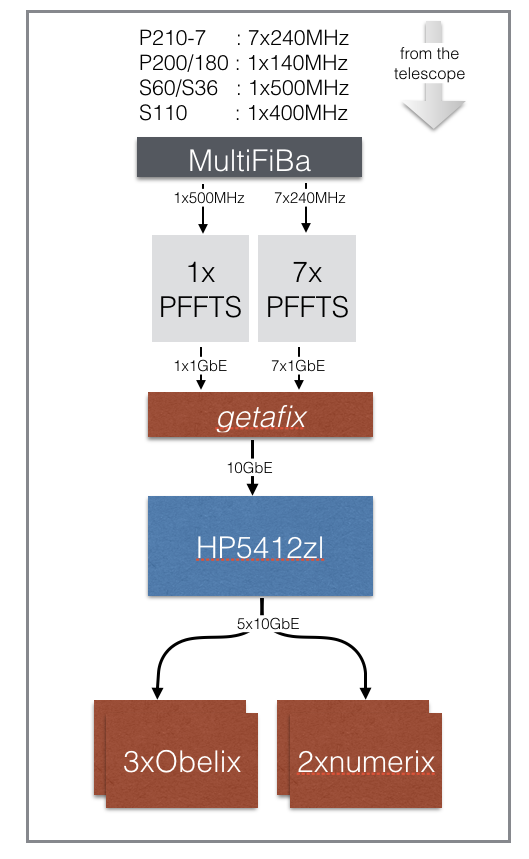The Pulsar FFT Spectrometer
The PFFTS was developed by Bernd Klein's department in 2008/2009. The instrument serves as the first level signal processing unit for the pulsar search observations conducted with the 7-Beam receiver. In this modes, the FPGA is programmed to generate 512 total power frequency channels over the 300 MHz analog band, resulting in 585.9375 KHz channels. The samples are averaged to 54.6133µs.
The PFFTS also consists of an additional unit programmed to generate 128 Stokes-I channels at 65.536µs. This unit is meant to be used for high frequency observations, eg with 6/3.6cm receivers that can be set up to provide a 500MHz bandwidth.
Signal/Data flow
For the P217/P200/S110 receivers, the two sensed polarisations from the feed horn are delivered on coaxial cables as analog signals centred at 150MHz. These signals are converted to 10-bit digital data, and are then digitally processed to generate the pulsar search data product.
The search data re now transmitted over gigabit ethernet links as 1024-byte UDP packets. Since the packets cannot be routed via standard network switches, the UDP packets are sanitised getafix before being transmitted to the switch. From the switch one is then able to route the packets to a desired capture node (obelix0,1 or 2). In addition getafix generates an additional copy of the data for numerix0/1 for the Heimdall pipeline.

